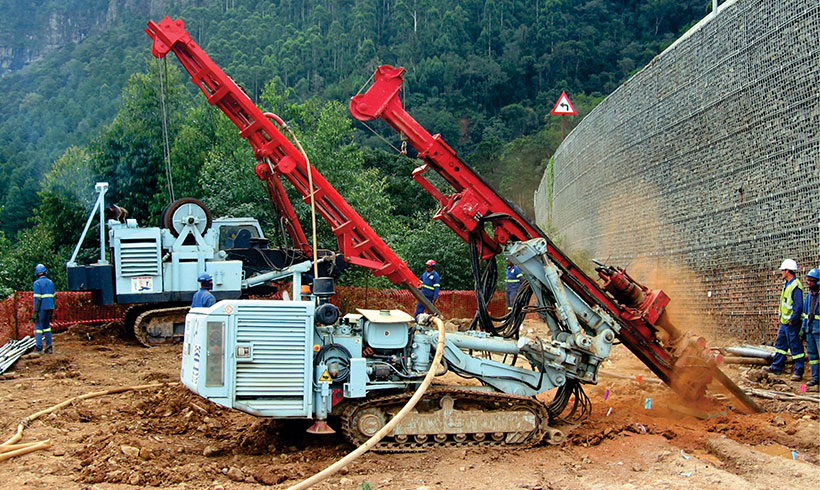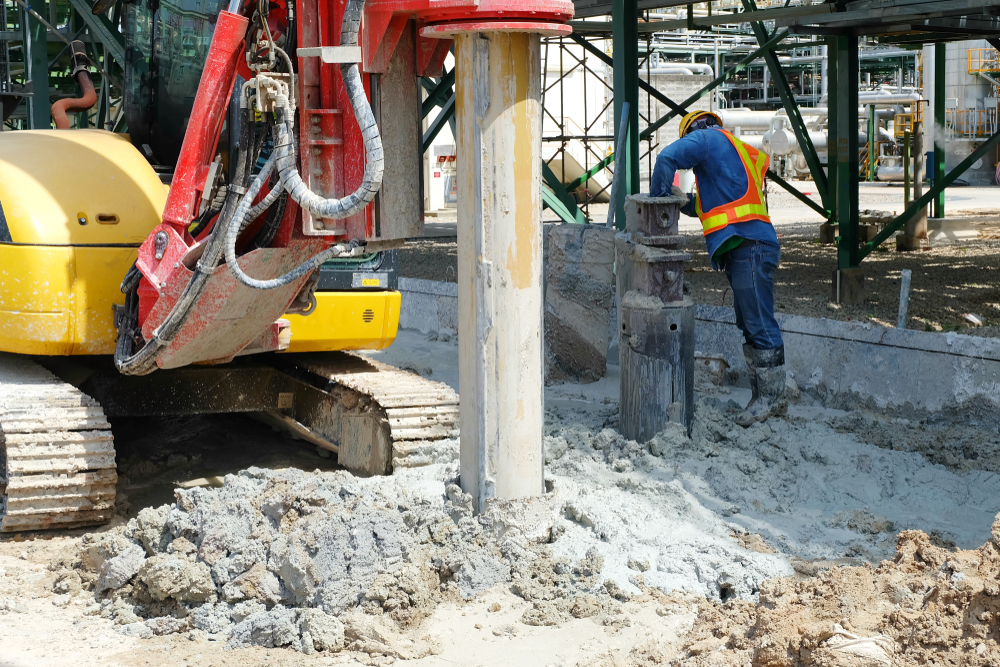Excitement About Geotechnical Engineering For Construction Projects
Getting The Geotechnical Engineering For Construction Projects To Work
Table of ContentsThe Facts About Geotechnical Engineering For Construction Projects RevealedThe 15-Second Trick For Geotechnical Engineering For Construction ProjectsThe Of Geotechnical Engineering For Construction ProjectsExcitement About Geotechnical Engineering For Construction ProjectsGeotechnical Engineering For Construction Projects Fundamentals ExplainedGeotechnical Engineering For Construction Projects - Truths10 Simple Techniques For Geotechnical Engineering For Construction ProjectsFacts About Geotechnical Engineering For Construction Projects Revealed
Accompanying this enhanced complexity comes geological and environmental aspects that affect the layout of the structure, which is arguably the most integral part of any kind of development. People require to trust that structures, bridges, and roads will stand the test of time. A Geotechnical designer suggests on how a framework can best be sustained giving its distinct conditions What's hidden listed below the surface of the ground is most likely one of the most vital piece of details that a Geotechnical Engineer desires.These examples are then analyzed by the laboratory to figure out soil structure (Geotechnical Engineering for Construction Projects). The breakdown of sand, silt, clay, and various other materials existing in the dirt, assists the engineer determine what distinct characteristics the site has and what the ramifications of those might be. Naturally dirt structure is just one examination that can be executed on examples
The Geotechnical Engineering For Construction Projects Diaries
Based upon these tests, there might be more soil borings that are drilled, or the engineer might have enough info from the preliminary tests to make a referral to the client on exactly how ideal to continue with their project. Outcomes are usually reported with borings logs which show the soil make-up and features at a range of midsts.
Geotechnical designers are accountable for understanding the buildings of natural deposits and using this knowledge to create secure, affordable layouts for construction jobs. It is an important part of any kind of civil design project, as it is used to determine the suitability of a site for building and to make sure the framework's safety.
This includes doing lab examinations on the samples and utilizing geophysical techniques such as seismic refraction and electric resistivity studies. This data is made use of to analyze the website's suitability for building and construction and to establish the type of foundation that need to be made use of. Geotechnical engineering examines soil problems, recognizes potential hazards, selects an ideal foundation system for the recommended framework, and identifies the very best foundation design for a provided job.
Geotechnical Engineering For Construction Projects for Beginners
The framework may become unstable or collapse without correct dirt stabilisation, leading to expensive repair services and potential injury. The stablizing process involves using different techniques to boost the stability of the dirt, such as compaction, grouting, and the enhancement of reinforcing products. Without dirt stabilization, the dangers connected with construction jobs would certainly be much greater, and the results much less trustworthy.
Geotechnical designers conduct site investigations to examine the dirt's buildings and determine prospective dangers. They create and apply dirt stablizing techniques, such as adding concrete, lime, or other maintaining agents, to improve the soil's stamina and security.
The 8-Second Trick For Geotechnical Engineering For Construction Projects
Geotechnical engineers are important in helping to guarantee that dirt stablizing is done correctly so that the structure is secure and safe. Geotechnical design is likewise used to examine dirt conditions and determine possible hazards. This consists of examining possible flooding, landslides, and various other natural catastrophes that could impact the foundation.
Geotechnical engineers utilize this knowledge to carry out site investigations, dirt, and rock screening, and to translate the outcomes to identify the suitable design parameters for a project. This details is utilized to guarantee that the structure, keeping walls, inclines, and other frameworks built on or within the subsurface products have enough stability and resistance to exterior lots, such as earthquakes, wind, and water.
These frameworks require a deep understanding of the habits of the subsurface materials, along with the capability to manage the influence of excavation and construction on the surrounding atmosphere. Geotechnical designers utilize their knowledge to establish the suitable layout parameters for these frameworks, such as the shapes and size of the tunnel, the toughness of the supporting rock, and the kind and amount of assistance called for.
Along with the style and construction of frameworks, geotechnical design likewise plays an essential function in the recovery and upkeep of existing structures. As structures age, they might experience destruction or various other troubles that impact their security and efficiency. Geotechnical designers utilize their experience to assess the condition of these structures, identify the reasons of the troubles, and develop methods to address them.
The 7-Minute Rule for Geotechnical Engineering For Construction Projects
In this article, I will certainly review the function of geotechnical engineering and the continue reading this kinds of problems geotechnical designers fix. Geotechnical designers (geotechs) are associated with virtually every type of civil engineering project. Every structure is supported by dirt or rock unless it is drifting, flying, or dropping down.
Geotechs are typically most involved at the start of a project. Geotechnical Home Page Engineering for Construction Projects. A few of the jobs that a geotech may be in charge of are checking out subsurface conditions, determining called for lab testing of dirt and rock, interpreting the subsurface expedition results, and creating reports that record the site problems and supply recommendations for structures, fill specifications, incline stability, and so on
It is not uncommon for geotechnical engineers to concentrate on just one of the locations listed above and research that subject their whole profession. Geotechnical design is an important facet of any civil design task. No matter exactly how terrific a framework is developed, it will certainly not be great for long if the foundation is poor.
Geotechnical Engineering For Construction Projects Fundamentals Explained

Sometimes, points that might not appear crucial turn out to be vital years later when problems emerge. One last thing to bear in mind: geotechnical design is married to geology. Despite exactly how wonderful your design competence is, if something essential is missed out on in the geologic characterization at a site, your experience may not save you.
He takes pleasure in crawling about on any type of landslide he can locate and investing time fly fishing on the water. I wish you appreciated this week's blog post by visitor writer Jese Vance. Learn More I hope you'll join us.
The Ultimate Guide To Geotechnical Engineering For Construction Projects

It is important to know the soil problem prior to designing the kind and depth of foundation needed for the framework. In order to understand the subsurface dirt condition, a geotechnical examination is required.
Little Known Facts About Geotechnical Engineering For Construction Projects.
As soon as the test results come, the Geotechnical Engineer analyses the report, which describes the dirt and rock residential or commercial properties groundwater problem and the associated threats. The kind of foundation called for to construct the framework is after that identified. Based upon the suggestion of the Geotechnical Designer, the architectural engineer then designs the structure.